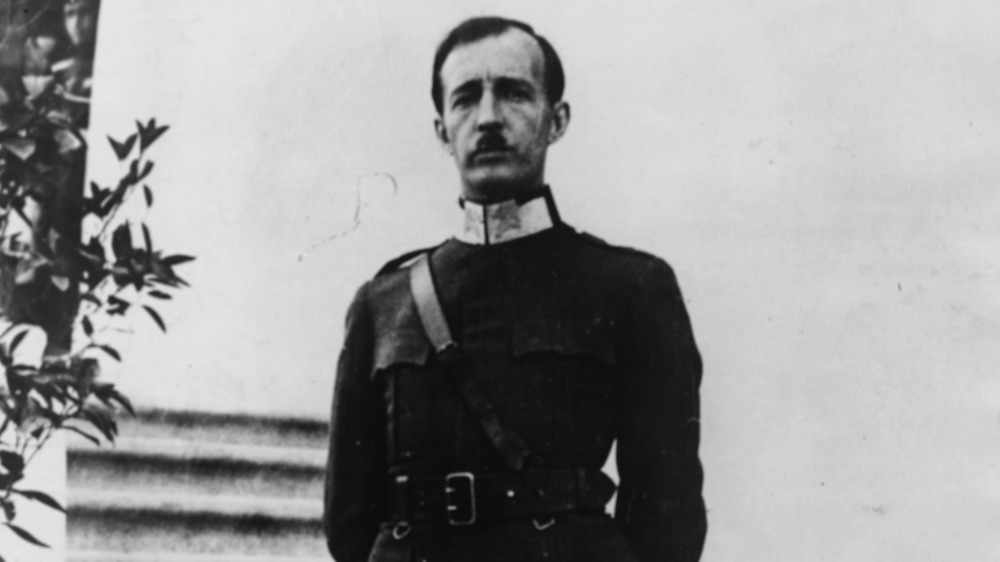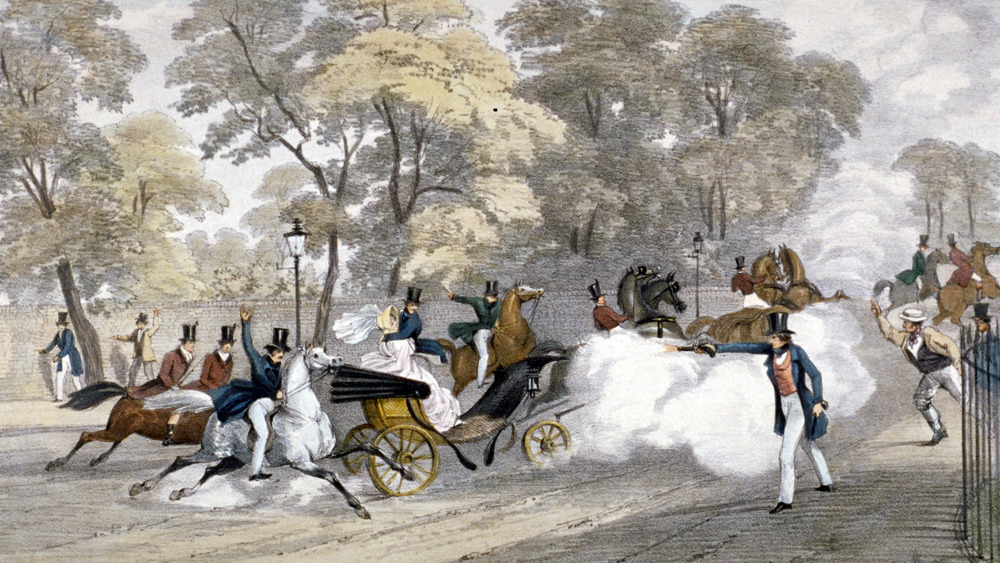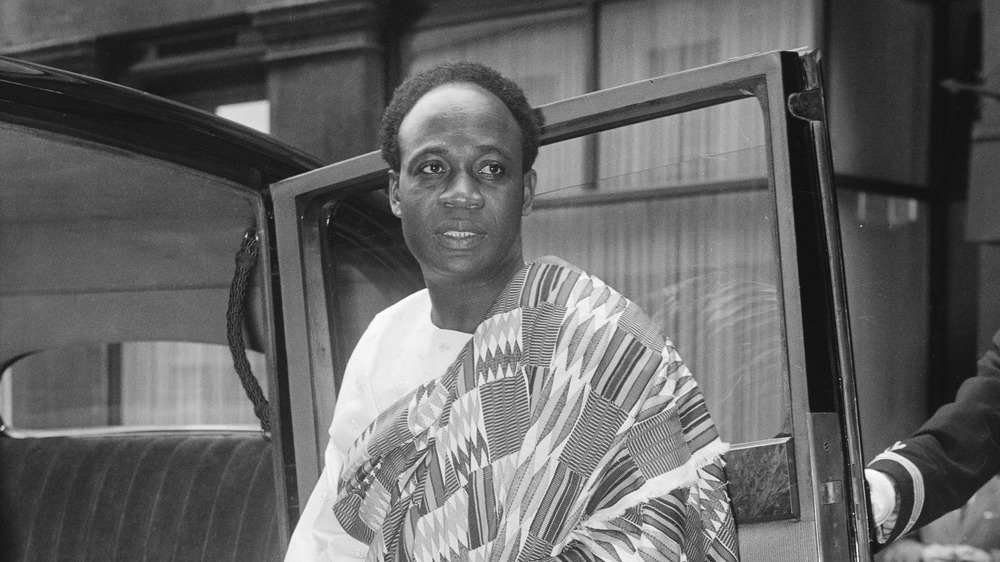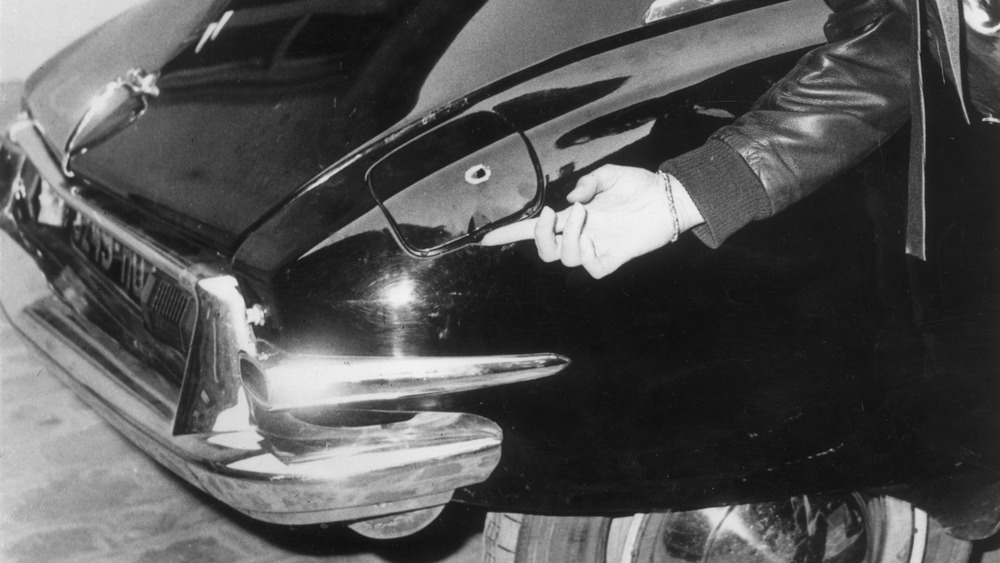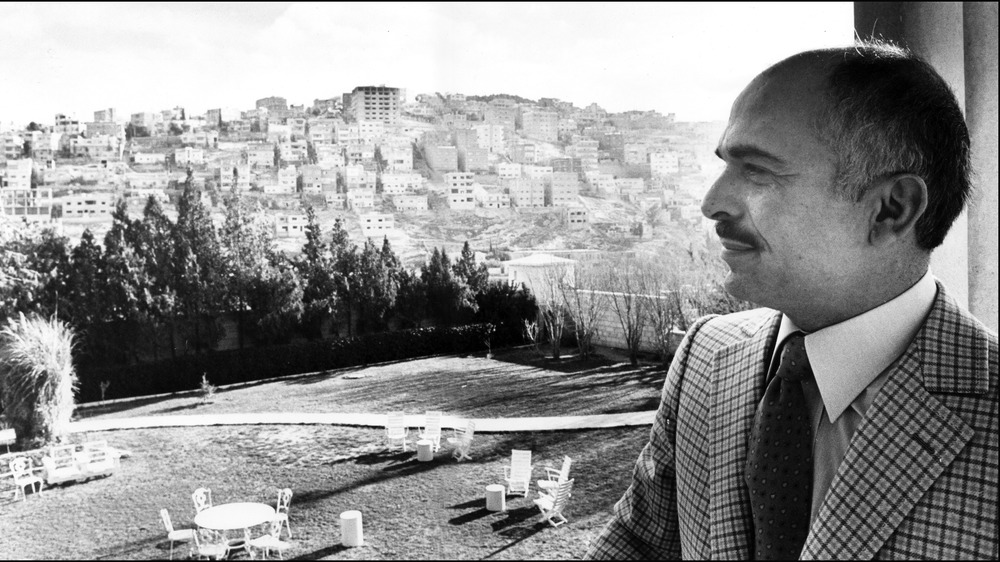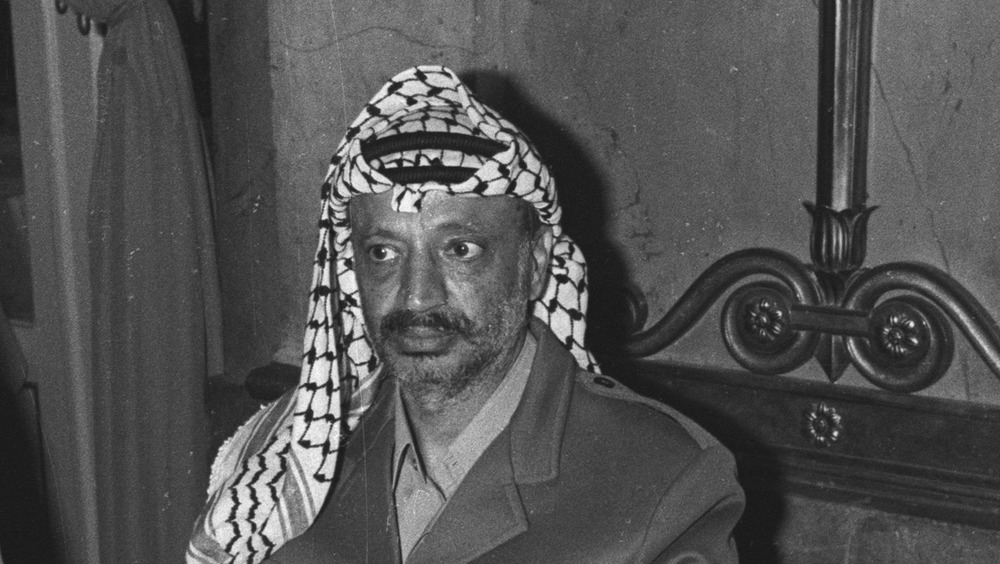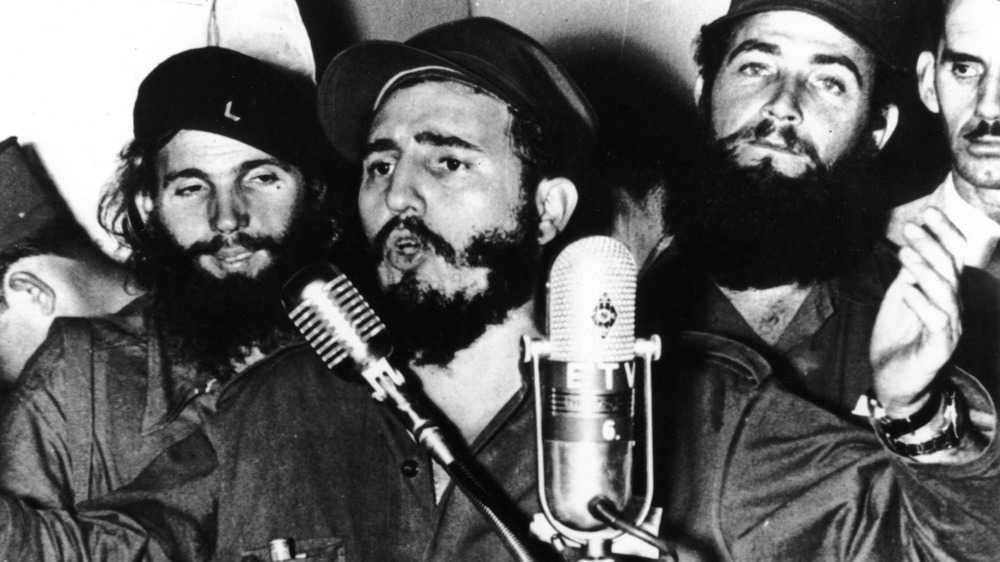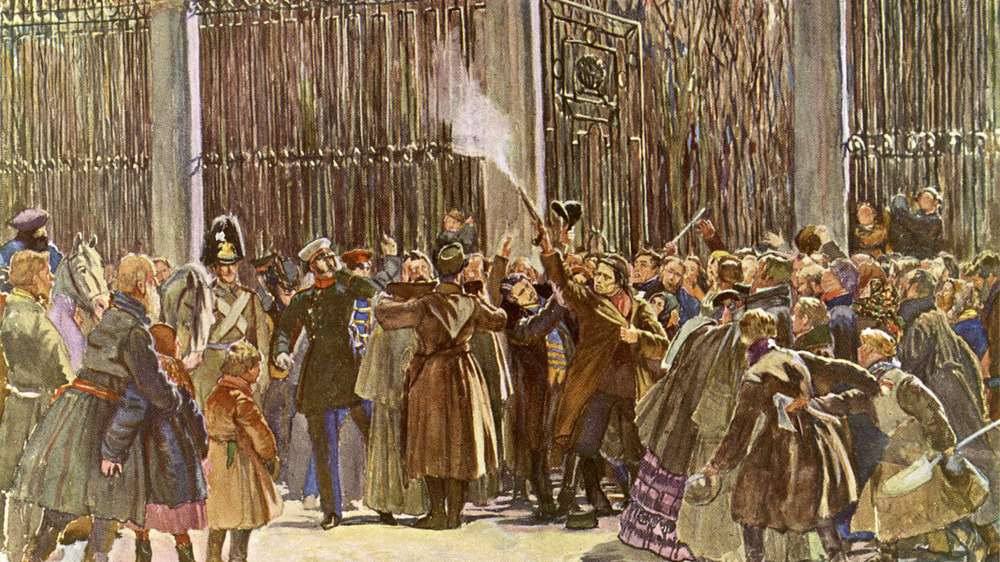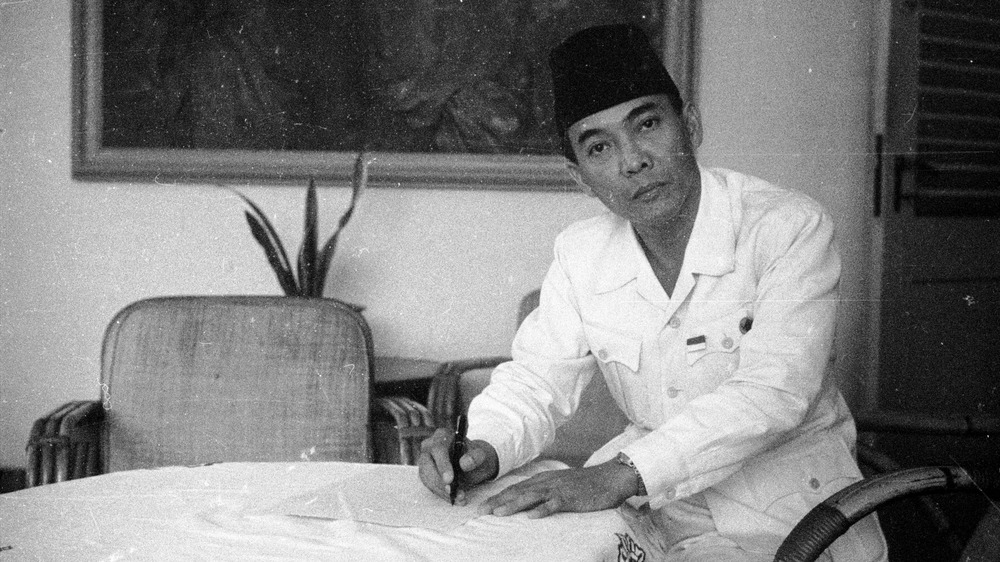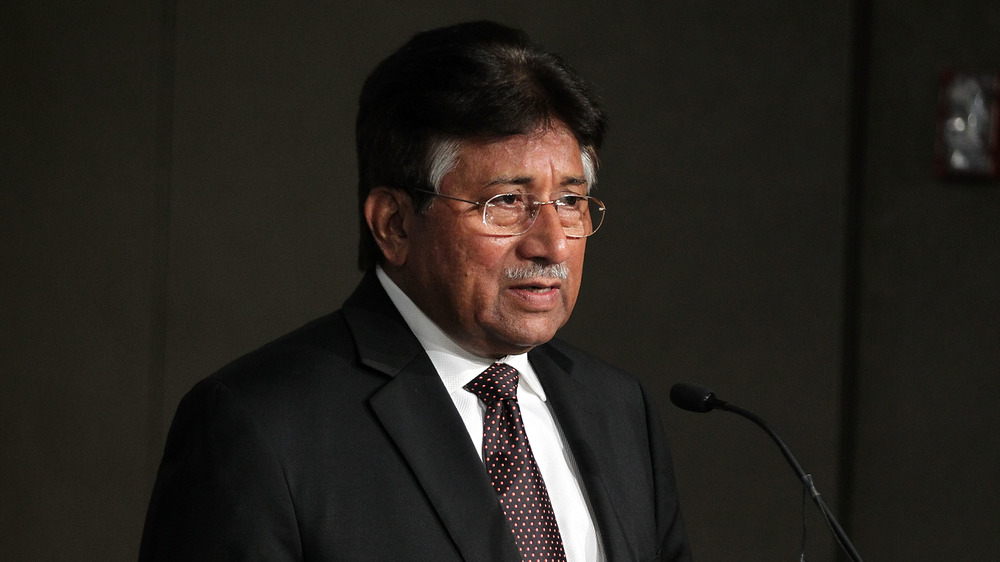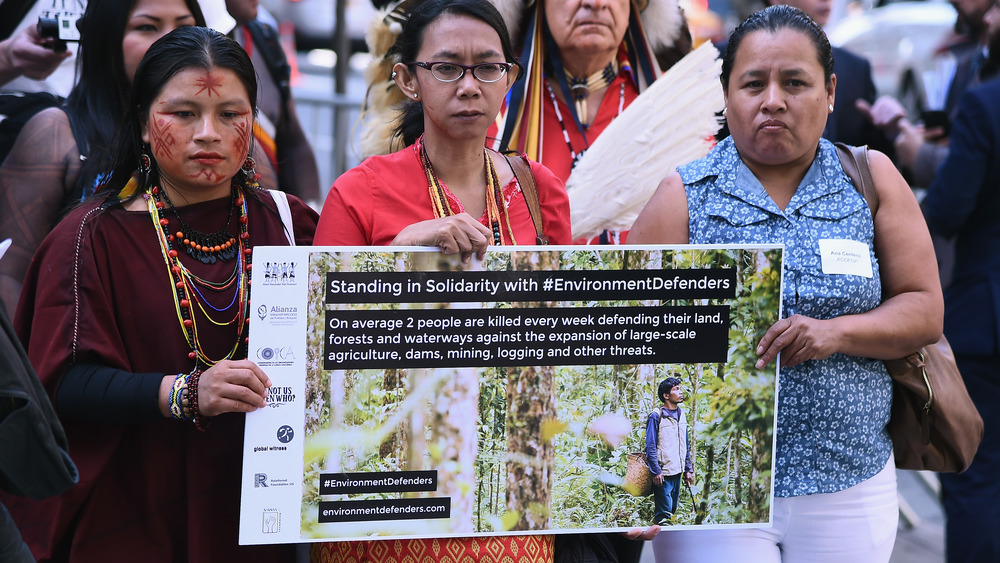Historical Figures Who Survived The Most Assassination Attempts
Throughout history, prominent figures have been targeted for assassination. And if it occurred during the 20th century, it's more than likely the CIA was involved somehow. But some historical figures were able to survive numerous assassination attempts, some through skill and others by dumb luck. Some survived dozens of assassination attempts while others survived hundreds.
Some people, like Rasputin, have gone down in history as being notoriously difficult to kill. But some of the numerous assassination attempts on his life might actually be a myth. It's suspected that Putin has also been the target of numerous assassination attempts, although clearly Putin himself has been much more successful.
Queen Victoria, on the other hand, seemed to survive numerous events and come back stronger in the eyes of the public each time. This isn't unexpected, for even President Reagan's popularity soared after his attempted assassination, jumping from 38 percent to 51 percent almost in an instant. And President Reagan is only one of thirteen presidents to survive an assassination attempt.
Tragically, people continue to face assassination attempts in 2020, and indigenous leaders who fight for environmental protections are some of the biggest targets. Despite the fact that the UN High Commissioner for Human Rights has stressed the protections of indigenous people rights on their lands, in places like Brazil, miners and loggers repeatedly encroach on indigenous lands and murder indigenous leaders who resist. Here are some of the historical figures who survived the most assassination attempts.
Fighting back against assassination attempts
King Zog I, the last monarch of Albania, survived over 50 assassination attempts during his reign from 1928 to 1939. There also existed roughly 600 blood feuds, or gjakmarrja, against him.
The assassination attempts began as soon as King Zog started rising to power in the early 1920s. As prime minister, he frequently disappeared anyone who disagreed with his politics, deeming them "an enemy of freedom."
One of the first assassination attempts occurred before Zog became king. On February 23, 1924, Zog was shot twice by Beqir Valteri as he entered parliament. Zog survived, and although he tried to suppress knowledge of the attempted assassination, by June of that year, he and his followers were forced into exile. But by 1925, Zog staged a coup and resumed his rule over Albania, finally crowning himself king in 1928.
On February 21, 1931, another assassination was attempted by Aziz Çami and Ndok Gjeloshi while King Zog visited the Vienna State Opera. According to Operation Valuable Fiend by Albert Lulushi, by firing back at the assassins with a pistol, King Zog became "the only known case in history of a head of state fighting back during an assassination attempt."
Zog ended up fleeing to Great Britain when Italy invaded Albania during the Second World War and Mussolini made Albania a protectorate, despite the fact that Zog had initially supported Mussolini. Although he hoped to return, after Enver Hoxha established a communist republic, King Zog formally abdicated in 1946.
An assassination fit for a queen
During her reign from 1837 to 1901, Queen Victoria of England survived eight attempts on her life, and only one of them resulted in actual injury to the queen. According to Culture Trip, the first attempt occurred four months after Victoria married Prince Albert in 1840. As the newlyweds headed to Hyde Park in an open carriage Edward Oxford, an 18-year-old barman, fired at the queen.
The crowd promptly overpowered him while Victor and Albert continued onward "to show the public that we had not, on account of what had happened, lost all confidence in them," Albert later wrote. Oxford was imprisoned at Bethlem asylum for 24 years before being deported to Australia in 1864.
According to The Smithsonian Magazine, the only time Queen Victoria was actually injured was by the only attempt made without a gun. In 1850, she was struck over the head with an "iron-tipped cane" by Robert Pate, an ex-soldier. Although she appeared in Covent Garden two hours later to prove that her injury wasn't severe, Queen Victoria was left with a "black eye, a welt, and a scar that lasted for years."
Ultimately, Queen Victoria didn't seem to mind all the assassination attempts. She became more and more popular after every attempt, and after the 1882 attempt, she wrote, "It is worth being shot at to see how much one is loved."
Trying to assassinate Ghanaian independence
Kwame Nkrumah, the first Prime Minister and President of Ghana, survived numerous assassination attempts as he helped lead Ghana to independence from Britain in 1957. As a fierce advocate for liberating the African continent from imperialism, between 1956 and 1962, Nkrumah survived at least five assassination attempts.
According to The New York Times, although President Nkrumah often escaped the assassination attempts unscathed, those around him couldn't say the same. During an attempted bombing on September 9, 1962, over 60 people were wounded and a little girl was killed in the blast.
And according to Kwame Nkrumah's Politico-cultural Thought and Policies by Kwame Botwe-Asamoah, eventually, the repeated assassination attempts caused Nkrumah to isolate himself. The assassination of Patrice Lumumba also "affected him traumatically," someone whom the CIA had also considered assassinating.
Striving for a pan-African policy, President Nkrumah's governmental policies veered toward the dictatorial, and by 1964, he had established himself as president for life until he was deposed during the 1966 military coup. According to Nkrumah himself, the coup was merely an extension of the failed assassination attempts, "no doubt inspired by neo-colonialist aided military coups in other parts of Africa." After Nkrumah was overthrown, many in the opposition party revealed that they had in fact been involved in the numerous assassination attempts.
Over 30 failed assassination attempts
Known primarily for leading France against the Nazis during World War II, Charles de Gaulle survived over 30 assassination attempts, some of which allegedly involved the CIA. During several of the assassination attempts, de Gaulle survived because he had such skilled chauffeurs, such as in 1961, when a napalm bomb exploded on the road and the driver drove straight through the flames.
Another assassination attempt in 1962 was also prevented by de Gaulle's driver, who was able to accelerate away after 140 bullets were fired into his car, popping three tires and killing two bodyguards. Along with a group of soldiers, Jean Bastien-Thiry led the assassination attempt out of the belief that de Gaulle's acceptance of Algerian independence had been a betrayal. The group was soon arrested and they became the last people to be executed by firing squad in France.
Although it's unclear whether or not the CIA was ever directly involved in any of the assassination attempts, according to The Guardian, the CIA was definitely approached in 1965 and asked to "help in a conspiracy to kill the French President." The plan involved a poisoned ring, "perhaps with a curare-tipped needle," hoped to seal de Gaulle's fate with a lethal handshake. Unfortunately, it's unknown how much the CIA truly entertained the plot.
From assassination bullets to nose drops
Even before ascending to the throne of Jordan, King Hussein of survived an assassination attempt that claimed the life of his grandfather, King Abdullah I. According to The Associated Press, Hussein was 16 years old when his grandfather was assassinated on July 20, 1951. Hussein was with him and was able to miraculously survive because a medal on his chest deflected the bullet aimed at his heart.
Although Hussein's father, Talal, was next in line for the throne, after a year, he abdicated, and 17-year-old Hussein ascended to the throne. During his reign from 1952 to 1999, King Hussein survived over ten assassination attempts, with methods ranging from bullets to food poisoning to rocket launchers.
One of the assassination attempts even involved putting acid into the nose drops that King Hussein used for his sinusitis. The only reason the plot was uncovered was when a drop spilled and burned the floor. According to Global Security Watch Jordan by W. Andrew Terrill, it's estimated that King Hussein survived over ten assassination attempts, perpetrated by a variety of individuals and organizations, by both skill and sheer luck.
King Hussein reigned until his death from cancer in 1999, surviving both assassination and coup attempts and going on to order assassinations of his own.
Chains of assassination attempts
While King Hussein of Jordan was surviving assassination attempts, he was also part of a group that was ordering assassination attempts on Yasser Arafat, the former chairman of the PLO, an organization that fights for Palestinian liberation.
According to History Collection, it's believed that King Hussein ordered an assassination attempt in 1970. Arafat was the target of King Hussein's Bedouin troops, and although King Hussein eventually succeeded in driving the PLO out of Jordan in 1971, Arafat managed to survive.
The Israeli government also conspired repeatedly to assassinate Arafat. Mossad, or the Israeli Institute for Intelligence and Special Operations, is thought to be behind the majority of the assassination attempts of Arafat's life. But even though the Israeli government acknowledges various attempts to assassination Arafat, it denies any involvement with his actual death in 2004, the cause of which remains unknown. However, according to Rise and Kill First by Ronen Bergman, there's strong evidence to suggest that the Israeli government "used radiation poisoning to kill Yasser Arafat." And traces of polonium were later discovered on Arafat's belongings.
Overall, it's not unlikely that Arafat was eventually assassinated by Mossad agents, considering that it's estimated that Israel has carried out over 2,700 assassination operations since 1948.
When the CIA hates you, assassination is possible
Few targeted Fidel Castro like the CIA. Along with others, they tried to assassinate Castro so many times that the highest estimates number over 600 attempts. Although it's impossible to confirm the more than 600 attempts, many of the assassination attempts aren't only true but downright ridiculous.
According to Vox, the most famous attempt was the cigar plot, which entailed contaminating a box of cigars with botulinum toxin. Another option involved dusting the inside of a scuba diving suit with a fungus and putting tuberculosis "in the breathing apparatus." Although such a suit was created, it reportedly "never left the laboratory." Given Castro's love of diving, the CIA also considered building an exploding seashell.
Many of the attempts were revealed during the Church Committee investigation, which revealed to the public the countless illegal activities of the FBI and the CIA. But despite their many efforts, the CIA never managed to murder Fidel Castro, and most of their attempts were "spectacular failures" (via CNN). At one point, the CIA even conspired with the American mafia and managed to slip poison into Castro's ice cream. Although there are different versions of the assassination attempt, most agree that this was the closest anyone came to assassinating Castro.
Avoiding the CIA's death wish is no easy task, but Castro died of natural causes at the age of 90 on November 25, 2016.
Sixth assassination attempt's the charm
During his reign from 1855 to 1881, Tsar Alexander II of Russia survived five assassination attempts. According to The Student, Alexander II became a target in 1866 after a series of reforms, including emancipating the serfs in 1861. The first would-be assassin was Dmitry Karakozov, a 26-year-old revolutionary, who shot at Alexander II on April 4, 1866. In response, Karakozov was executed later that year, and in response, Alexander II also "adopted a more conservative and repressive domestic policy."
Alexander II also survived several assassination attempts by a revolutionary group called Narodnaya Volya, or The People's Will. However, both of their attempts to assassinate the Tsar with explosives failed. In the first instance, the Tsar changed his route, avoiding the bombs placed on train tracks, and in the second instance, the Tsar simply happened to be late for dinner and "missed the explosion."
However, an explosion rerouted by Sophia Perovskaya on March 13, 1881, finally succeeded. Alexander lost both of his legs in the explosion and passed away soon after. Unfortunately, Alexander II had also planned to create an elected parliament right before his death, making the country a constitutional monarchy. However, the first step Alexander III, his more conservative son, took after his coronation was to cancel those orders.
Resigned to house arrest
President Sukarno, the first president of Indonesia, survived numerous assassination attempts during his reign from 1949 to 1966. While many of the assassination attempts were executed by Dutch agents, likely in retaliation for the struggle for Indonesian independence, the CIA also considered assassinating President Sukarno.
According to The Sydney Morning Herald, the CIA went so far as to recruit someone to carry out the assassination. However, Richard Bissell, the CIA Deputy Director of Plans at the time, claims that the plan "was never perfected to the point where it seemed feasible."
Although no one ever succeeded in assassinating Sukarno and the CIA denies any involvement with his death in 1970, his hold on power started weakening on October 1, 1965, when the September 30th Movement staged a coup. Although the coup was swiftly ended, it resulted in a purge that resulted in between 80,000 to 1,000,000 people being murdered by the military, the majority of whom were communist or alleged communists.
The slaughter of the Partai Komunis Indonesia (PKI), or the Indonesian Communist Party, obliterated Sukarno's supporters, and he was soon forced to hand the presidency over to Suharto, who ordered the military's massacre and propaganda campaign. Sukarno died while under house arrest in 1970, while Suharto went on to rule for 31 years until his resignation in 1998.
Assassination attempts and a fall from power
After a military coup in 1999, Pervez Musharraf became the tenth president of Pakistan in 2001. Over the course of his presidency from 2001 to 2008 and in the following years, Musharraf survived at least four assassination attempts.
While Musharraf often managed to escape unscathed, sometimes others were caught in the cross fires. During an assassination attempt on December 25, 2003, 16 other people died during an assassination attempt by two suicide bombers. Musharraf suffered only a cracked windshield on his car.
On August 18, 2008, Musharraf resigned in order to avoid impeachment proceedings. After four years of self-imposed exile, Musharraf returned to Pakistan and the assassination attempts resumed once more. According to Time Magazine, the most recent assassination attempt occurred on April 3, 2014.
Musharraf resumed his self-exile in Dubai in 2014 when he was allowed to leave the country to seek medical treatment. And according to the BBC, in 2019, he was sentenced to death in absentia for treason. However, in January 2020, his conviction was overturned after the court that issued the sentence was deemed to be unconstitutional.
An attempt to silence indigeneity by assassination
In Costa Rica, Bribrí leader Sergio Rojas was the target of several assassination attempts due to his work for indigenous people of Costa Rica. According to Assassinations Podcast, Rojas organized a resistance movement in 2009, after "an armed conflict with non-indigenous landowners resulted in serious injury for around fifty Bribrí people, whose homes were also vandalized and looted."
This made Rojas a target, and he was soon the main subject of a defamation campaign led by the Buenos Aires Municipal Council (the local government), the state government, and the National Commission for Indigenous Affairs (CONAI). Rojas survived at least two assassination attempts, in 2012 and 2015, and in the latter year, he was also briefly imprisoned for protesting indigenous peoples' loss of traditional tribal land.
Tragically, Rojas was assassinated on March 18, 2019, in his home in the Salitre Indigenous Reserve. While police concluded that his death was the result of murder, no one was ever arrested or charged for his death.
Unfortunately, indigenous leaders and people represent a "disproportionate percentage of [environmental] defenders who are killed" in the 21st century. According to Cultural Survival, in 2018, 164 indigenous leaders were assassinated in Colombia alone.

